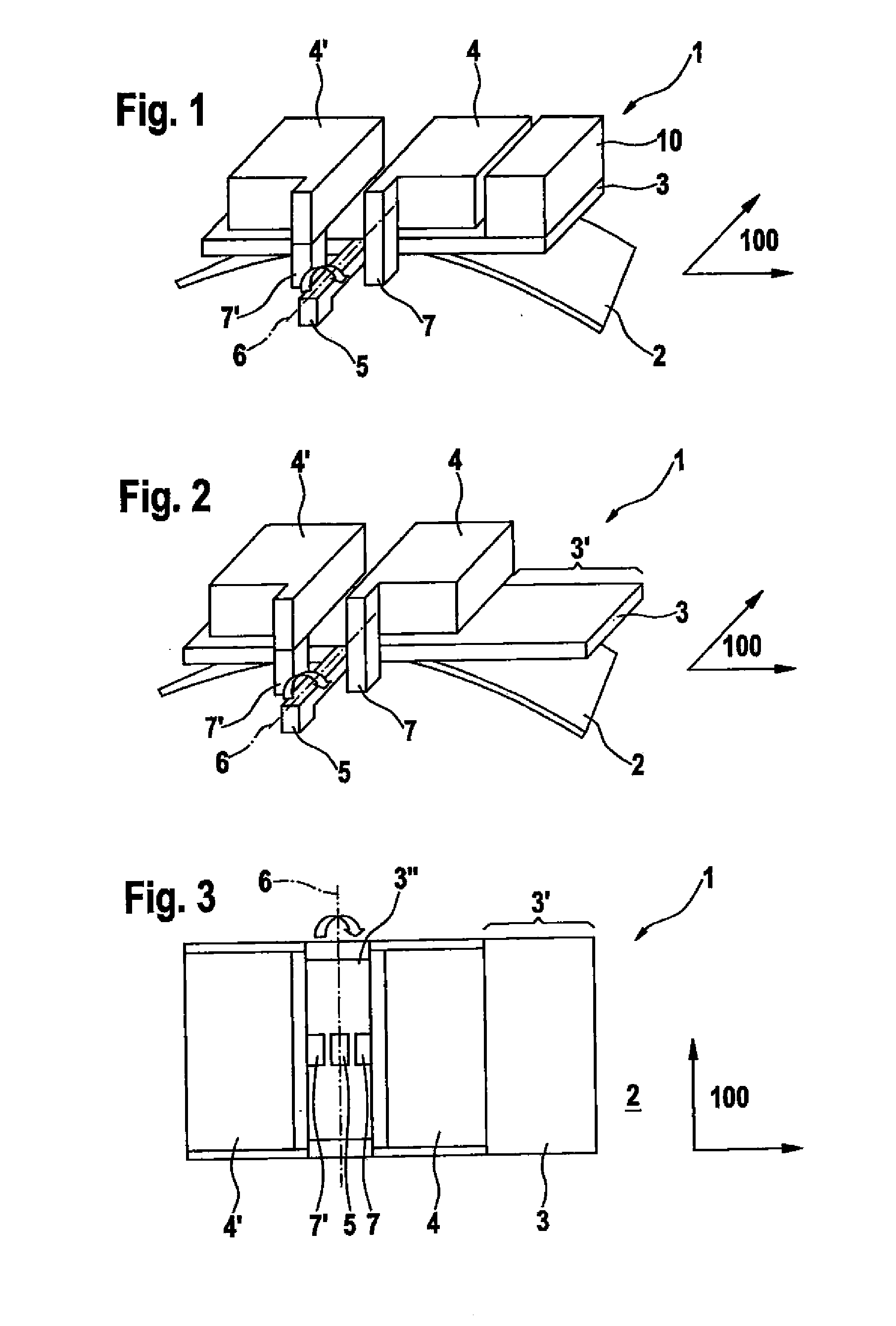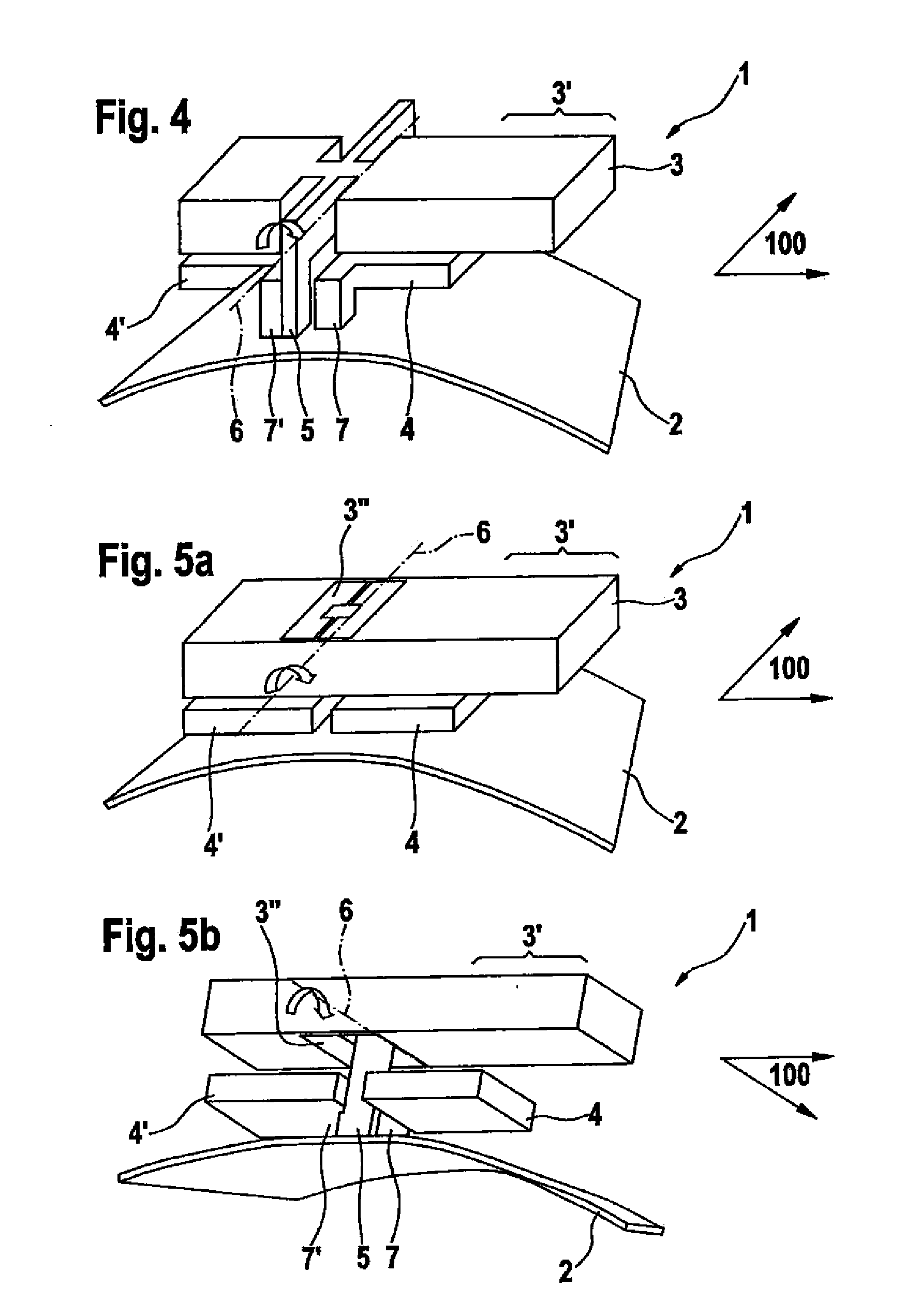Sensor system
a sensor and sensor technology, applied in the field of sensor systems, can solve the problems reduced measuring accuracy of sensors, and no symmetrical geometry of the lower side of the first electrode with respect to the axis of rotation, so as to reduce the danger of undesired offset signals, increase the measurement accuracy, and simple and cost-effective implementation
- Summary
- Abstract
- Description
- Claims
- Application Information
AI Technical Summary
Benefits of technology
Problems solved by technology
Method used
Image
Examples
Embodiment Construction
[0028]In the figures, identical parts are provided with the same reference numerals and thus are usually also named or mentioned only once.
[0029]FIG. 1 shows a schematic perspective view of a sensor system 1 according to a first specific embodiment of the present invention, sensor system 1 having a substrate 2, which is represented in an exaggeratedly bent manner to illustrate the mechanical stress with respect to its main plane of extension 100. In addition, sensor system 1 includes a seismic mass 3, which is fastened in a suspension region 5 on substrate 2 in such a way that seismic mass 3 is rotatable about a torsional axis 6 relative to substrate 2, suspension region 5 especially including a bending spring and / or a torsion spring. Seismic mass 3 has a mass element 10 on one side of torsional axis 6, which produces an asymmetrical mass distribution of seismic mass 3 with respect to torsional axis 6. The result is that, when there is an acceleration of sensor system 1 perpendicula...
PUM
 Login to View More
Login to View More Abstract
Description
Claims
Application Information
 Login to View More
Login to View More - R&D
- Intellectual Property
- Life Sciences
- Materials
- Tech Scout
- Unparalleled Data Quality
- Higher Quality Content
- 60% Fewer Hallucinations
Browse by: Latest US Patents, China's latest patents, Technical Efficacy Thesaurus, Application Domain, Technology Topic, Popular Technical Reports.
© 2025 PatSnap. All rights reserved.Legal|Privacy policy|Modern Slavery Act Transparency Statement|Sitemap|About US| Contact US: help@patsnap.com



